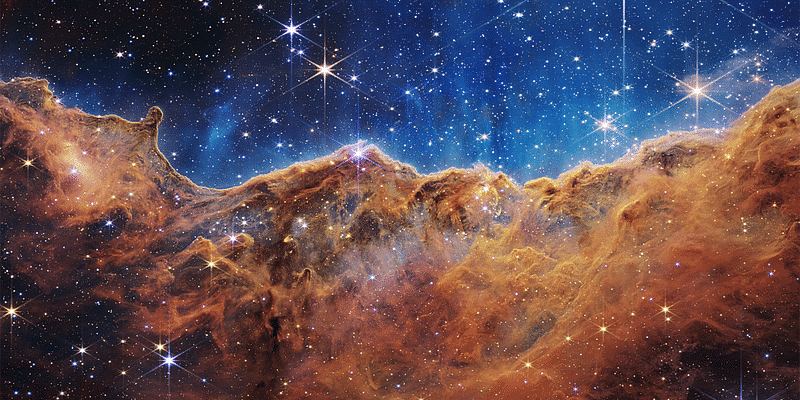In a follow-up to Tuesday’s released image, NASA has now unveiled the full set of first images taken by its $10 billion James Webb Space Telescope.
According to NASA, the high-resolution infrared pictures will help look at more detailed pictures of the formation of stars, the gas around a supermassive black hole, and dying of a star for the first time.
“These images, including the deepest infrared view of our universe that has ever been taken, show us how Webb will help uncover the answers to questions we don’t even yet know to ask; questions that will help us better understand our universe and humanity’s place within it,” said NASA Administrator Bill Nelson.
The “Cosmic Cliffs” of the Carina Nebula
Image credits: NASA, ESA, CSA, STScI
The “Cosmic Cliffs” of the Carina Nebula is a picture of the “earliest, rapid phases of start formation” that were hidden from previous technology. The infrared image of the Carina constellation, and future pictures like it, can help scientists and the telescope understand the gas and dust that goes into creating a new star.
Stephan’s Quintet
Image credits: NASA, ESA, CSA, STScI
Stephan’s Quintet are a group of five closely packed galaxies in the Pegasus constellation. This new image, and the ones to follow can help scientists determine how star formations are affected by close galaxies, and perhaps even provide insights into “the velocity and composition of the gas near its [the galaxies’] supermassive black hole.”
Southern Ring Nebula in near-infrared (NIRCam) and mid-infrared light (MIRI)
Image credits: NASA, ESA, CSA, STScI
The scene captured in the Southern Ring Nebula image detail a white dwarf star, which is much like our own Sun after it stopped burning fuel through nuclear fusion and shed its outer layers. As the star was dying, it repeatedly ejected mass, pulsating out stellar material. These images, and the ones to follow, can help scientists better understand the life cycle of stars.
The unveiling of these images signals the launch of the James Webb’s science operations. According to the NASA release, “astronomers around the world will have their chance to observe anything from objects within our solar system to the early universe using Webb’s four instruments.”










